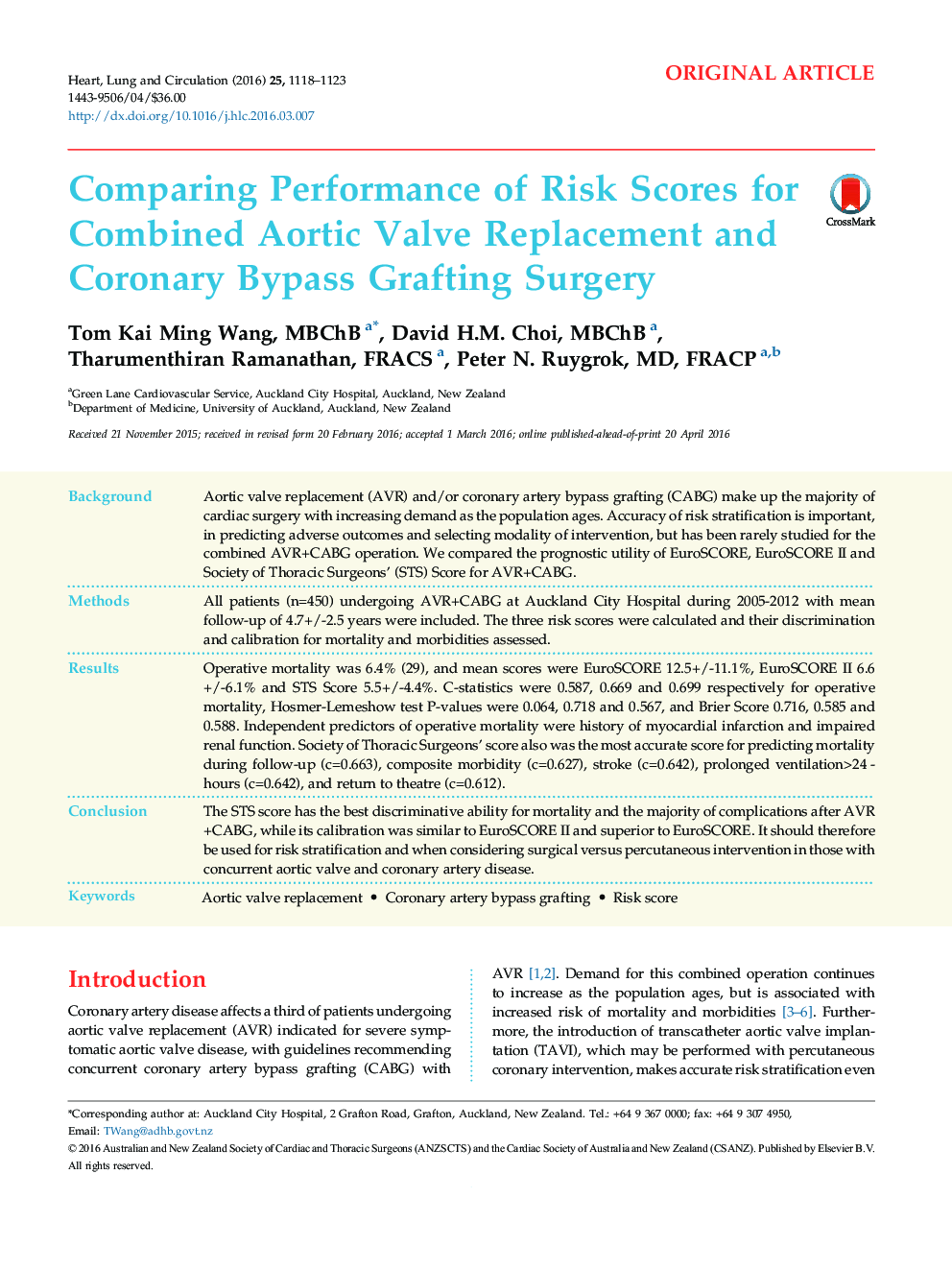| Article ID | Journal | Published Year | Pages | File Type |
|---|---|---|---|---|
| 5603030 | Heart, Lung and Circulation | 2016 | 6 Pages |
BackgroundAortic valve replacement (AVR) and/or coronary artery bypass grafting (CABG) make up the majority of cardiac surgery with increasing demand as the population ages. Accuracy of risk stratification is important, in predicting adverse outcomes and selecting modality of intervention, but has been rarely studied for the combined AVR+CABG operation. We compared the prognostic utility of EuroSCORE, EuroSCORE II and Society of Thoracic Surgeons' (STS) Score for AVR+CABG.MethodsAll patients (n=450) undergoing AVR+CABG at Auckland City Hospital during 2005-2012 with mean follow-up of 4.7+/-2.5 years were included. The three risk scores were calculated and their discrimination and calibration for mortality and morbidities assessed.ResultsOperative mortality was 6.4% (29), and mean scores were EuroSCORE 12.5+/-11.1%, EuroSCORE II 6.6+/-6.1% and STS Score 5.5+/-4.4%. C-statistics were 0.587, 0.669 and 0.699 respectively for operative mortality, Hosmer-Lemeshow test P-values were 0.064, 0.718 and 0.567, and Brier Score 0.716, 0.585 and 0.588. Independent predictors of operative mortality were history of myocardial infarction and impaired renal function. Society of Thoracic Surgeons' score also was the most accurate score for predicting mortality during follow-up (c=0.663), composite morbidity (c=0.627), stroke (c=0.642), prolonged ventilation>24Â hours (c=0.642), and return to theatre (c=0.612).ConclusionThe STS score has the best discriminative ability for mortality and the majority of complications after AVR+CABG, while its calibration was similar to EuroSCORE II and superior to EuroSCORE. It should therefore be used for risk stratification and when considering surgical versus percutaneous intervention in those with concurrent aortic valve and coronary artery disease.
